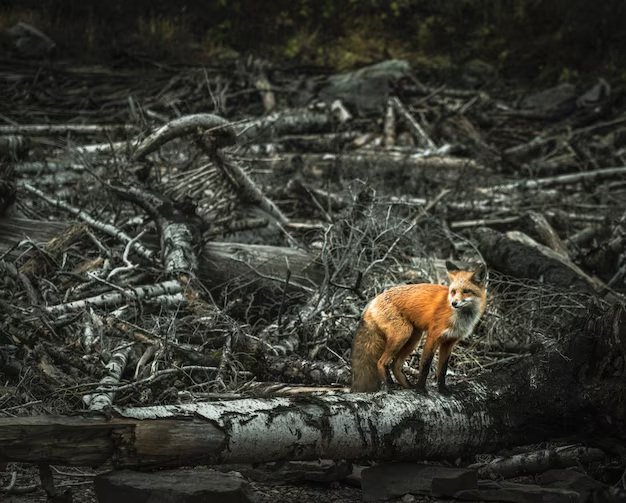How Much CO2 Does a Tree Absorb?
I still remember the first tree I planted in the far corner of my parents’ backyard. I was seven years old and didn’t know a thing about carbon footprints or global warming. But even then, I felt like planting that tree meant something. Looking back now, after years spent working in sustainability, I realise that instinct was rooted in truth: trees really do matter—not just symbolically, but scientifically.
Trees absorb carbon dioxide (CO₂)—a major contributor to climate change—and store it in their trunks, branches, roots, and the soil. This guide’ll break down exactly how much CO₂ trees absorb, based on peer-reviewed research and expert consensus. You’ll learn how different tree species, ages, and growing conditions affect carbon capture, and why protecting existing forests is just as important as planting new ones.
I’ll also include practical tips if you’re looking to plant with purpose—whether in your yard, your community, or through trusted reforestation programs

In This Article
- The Science Behind Trees and CO2 Absorption
- A Tree by the Numbers — A Statistical Table
- What Studies Say
- Beyond the Tree — The Role of Forests
- Real Stories in Action: How Communities Around the World Are Making a Difference
- Actionable Insights — What You Can Do
- Conclusion: Planting with Purpose
The Science Behind Trees and CO2 Absorption
Trees absorb CO₂ during the process of photosynthesis. It’s a beautiful natural system where trees pull carbon dioxide from the air, use sunlight to turn it into energy (in the form of glucose), and release oxygen that we depend on to breathe. The carbon doesn’t just vanish — it becomes part of the tree’s roots, trunk, branches, and leaves.
You might have heard that an average mature tree can absorb about 48 pounds (around 22 kilograms) of CO₂ per year, adding up to nearly one ton over a 40-year life. While this number is often quoted, it’s not pinned to a single scientific study. Organisations like the European Environment Agency and One Tree Planted share similar figures, but many factors cause this number to vary.
Not all trees absorb CO₂ equally. Several things influence how much carbon a tree can take in:
- Species: Fast-growing trees like poplars and willows absorb more carbon quickly, while slow-growing trees like oaks store carbon for longer.
- Age: Younger trees grow fast and capture more CO₂ early on, but older trees hold far more total carbon because of their size.
- Location: Trees in rich soil, with good sunlight and steady water, will grow faster and lock away more carbon than trees struggling in poor conditions.
- Health and Care: Healthy, well-maintained trees do a better job at carbon sequestration. Regular pruning and care matter.
In cities, where green space is limited, picking the right species matters even more. A study that evaluated 32 types of landscape trees found that certain species are standouts for urban environments. Large trees like Populus, P. stenoptera, and P. acerifolia were highly recommended. Among smaller species, V. odoratissimum, P. serratifolia, and S. oblata showed strong carbon sequestration potential. These species not only thrive in city settings but also help soak up more CO₂, making them smart choices for urban planners.
Environmental factors like soil fertility, water availability, sunlight, and temperature also heavily influence how well trees can do their job. The better the conditions, the faster the tree grows — and the more carbon it pulls out of the air.
Still, as wonderful as trees are, it’s important to keep perspective. Human activities pump about 40 billion tons of CO₂ into the atmosphere every year. Even if we planted 40 billion trees a year, which is a massive undertaking, we’d still need to wait decades before those trees grew big enough to make a real dent.
Trees are absolutely part of the solution, but they’re not the whole answer. They need to be paired with bigger efforts to cut emissions and protect the forests we already have.
A Tree by the Numbers — A Statistical Table
Understanding how different tree species contribute to carbon sequestration can help us make informed decisions about reforestation and urban planting. Here’s a comparative look at various species and their carbon absorption capacities:
| Tree Species | Avg. CO₂ Absorbed/Year (lbs) | Lifespan CO₂ Sequestration (tons) | Growth Rate | Notable Regions |
|---|---|---|---|---|
| Douglas Fir | 84.3 | 4.2 (over 50 years) | Moderate | Pacific Northwest, USA |
| American Sweetgum | 48 | 1.0 (over 40 years) | Fast | Southeast USA |
| Silver Maple | 454.5 | 12.5 (over 55 years) | Fast | Eastern USA |
| European Beech | 35.3 | 1.4 (over 80 years) | Slow | Europe |
| Teak (Tectona grandis) | 110.2 | 2.8 (over 50 years) | Moderate-Fast | Southeast Asia |
| African Mahogany | 5.0 | 0.1 (over 40 years) | Moderate | West & Central Africa |
Note: The above figures are approximate averages and can vary based on environmental conditions and tree health.
This table highlights the significant role that certain tree species play in carbon sequestration. For instance, the Silver Maple stands out with its high annual CO₂ absorption, making it an excellent choice for urban areas in the Eastern USA. Similarly, Teak, native to Southeast Asia, not only provides valuable timber but also contributes substantially to carbon storage over its lifespan.
While African Mahogany has a lower per-tree CO₂ absorption rate, its value shouldn’t be underestimated, especially when considering large-scale planting and its adaptability to various environments. Moreover, the Douglas Fir, prevalent in the Pacific Northwest, offers a balanced combination of growth rate and carbon absorption, making it a reliable choice for reforestation projects.
What Studies Say
Researchers have been digging into the numbers behind trees and their role in fighting climate change. It’s not just a feel-good story — what they’ve found is both impressive and encouraging.
In 2014, a study led by Dr. David Nowak and published in Environmental Pollution took a close look at urban forests across the United States. They discovered that these green spaces collectively removed about 17.4 million tons of air pollutants in a single year. This pollution removal had a significant impact on human health, with benefits valued at $6.8 billion.
On a global scale, forests are doing even more heavy lifting. A 2011 study published in Science estimated that forests absorb approximately 2.4 billion metric tons of carbon dioxide annually. That’s roughly one-third of the CO₂ emissions produced by burning fossil fuels each year.
The Intergovernmental Panel on Climate Change (IPCC) has also weighed in on the matter. Their 2022 report highlights afforestation (planting new forests) and reforestation (restoring lost forests) as some of the most cost-effective strategies for capturing carbon. These natural solutions not only help reduce greenhouse gases but also support biodiversity and provide other ecosystem benefits.
Learn More: Woods vs. Forests: What is the Difference
Beyond the Tree — The Role of Forests
A forest is more than a collection of trees. Biodiversity, soil microbes, understory vegetation, and even decaying organic matter all contribute to carbon sequestration. According to the Food and Agriculture Organisation (FAO), forests worldwide removed approximately 2.6 billion metric tons of CO₂ annually between 2016 and 2020. This process isn’t just about the trees themselves; it’s about the entire forest ecosystem working in harmony.
However, the capacity of forests to sequester carbon is under threat. Deforestation and forest degradation have been reducing the efficiency of these natural carbon sinks. For instance, while forests continue to absorb CO₂, their strength as carbon sinks has decreased over time, highlighting the impact of human activities on these ecosystems.
The Amazon rainforest, often referred to as the “lungs of the Earth,” exemplifies this challenge. Despite its vastness, the Amazon has experienced significant deforestation, leading to a reduction in its carbon sequestration capacity. This decline underscores the importance of protecting and restoring forest ecosystems to maintain their role in mitigating climate change.
Real Stories in Action: How Communities Around the World Are Making a Difference
While the science behind trees and carbon sequestration is powerful, the real-world efforts to restore and protect forests bring the data to life. These inspiring initiatives show how governments, cities, and organisations are taking tangible steps to fight climate change through tree planting and forest conservation:
1. Cross River State, Nigeria: A Commitment to Forest Restoration
In Cross River State, Nigeria, the government has embarked on an ambitious plan to plant five million trees annually to revive its forests. This initiative aims to combat deforestation and restore biodiversity in the region. The state has also introduced measures to regulate logging and employed rangers to protect its forests, demonstrating a comprehensive approach to environmental conservation.
2. Urban Tree Initiative, Munich, Germany
Munich has indeed been at the forefront of integrating advanced technology with urban forestry. Researchers from the German Aerospace Centre (DLR) and the Julius-Maximilians-University conducted a comprehensive study using very high-resolution remote sensing data to quantify the city’s urban tree stock. Their analysis identified approximately 1.54 million trees within Munich, with tree crowns covering about 92.8 km²—roughly 30% of the city’s total area (DLR, Earth Observation News, DLR eLibrary). These urban trees play a crucial role in sequestering carbon, with mature lime and maple trees being particularly effective. This data-driven approach supports strategic planning for urban greening and climate adaptation, helping Munich strengthen its resilience against the impacts of climate change.
3. Urban Greening in Lima, Peru
In Lima, Peru, urban green spaces have become vital in addressing environmental challenges. A study revealed that urban trees in the city sequester approximately 5.6 tons of carbon per hectare annually. While this rate is about 40-50% of that in temperate forests of Latin America, it’s notably higher than in semi-xerophytic forests. These green areas not only capture carbon but also enhance air quality and provide recreational spaces for residents.
4. MUC Climate Forest Project, Germany
The MUC Climate Forest initiative near Munich Airport exemplifies large-scale afforestation efforts. Spanning approximately 1,900 hectares, this project aims to offset around 7,000 tons of CO₂ annually by mid-century. Beyond carbon sequestration, the forest serves as a habitat for diverse species, offers recreational opportunities, and contributes to regional climate resilience.
5. Sahara Group’s Pan-African Initiative
Sahara Group, an energy and infrastructure conglomerate, in partnership with Treedom, is planting a minimum of 2,000 trees annually across Africa. These trees are expected to absorb more than 450 tonnes of CO₂ over the next decade. The initiative, known as ‘Asharami Groves,’ involves local farmers and brings environmental, social, and financial benefits to their communities.
Actionable Insights — What You Can Do
Feeling inspired to make a difference? Here are some practical steps you can take to contribute to carbon sequestration and environmental sustainability:
Plant Trees Wisely
When planting trees, opt for native, long-lived, and fast-growing species suited to your region. Native trees are adapted to local conditions, support biodiversity, and require less maintenance. For instance, in Nigeria, species like the African Mahogany (Khaya senegalensis) are well-suited for carbon sequestration and local ecosystems.
Support Reforestation Programs
Consider contributing to reputable reforestation organisations. One Tree Planted is a non-profit that facilitates global tree planting efforts, ensuring transparency and environmental impact. Similarly, Trees for the Future focuses on agroforestry and sustainable land use, having planted over 350 million trees across sub-Saharan Africa.
Advocate for Urban Greenery
Urban trees play a crucial role in mitigating climate change. They reduce CO₂ levels, lower urban heat, filter air pollutants, and provide mental health benefits. Engage with local authorities to promote the planting and maintenance of trees in urban areas, contributing to healthier and more sustainable cities.
Preserve Existing Forests
Protecting mature forests is vital, as they sequester significantly more carbon than young saplings. Advocate for the conservation of old-growth forests and support policies that prevent deforestation. Preserving these ecosystems maintains biodiversity and enhances carbon storage.
Measure Your Tree’s Impact
Utilise tools like i-Tree, developed by the USDA Forest Service, to assess the environmental benefits of trees. These tools help quantify CO₂ absorption based on species and age, aiding in effective tree management and advocacy efforts.
Learn More: Are Trees a Renewable Resource?
Conclusion: Planting with Purpose
One of our correspondents recently visited an agroforestry site in Ghana, where he met Kwame, a cocoa farmer who had interplanted his crops with teak and mango trees. Kwame shared, “My father cleared all the trees to grow cocoa, but I’m bringing them back—for my children and the air we breathe.”
His words stayed with us. Trees are more than carbon sinks—they are memories, legacies, ecosystems, and quiet warriors in our climate battle.
Whether you’re planting a single tree or advocating for national forest policies, your actions ripple across generations. As climate change accelerates, understanding the carbon-absorbing power of trees becomes not just important, but essential.
So, the next time you stand beneath a leafy giant, take a moment to breathe deeply and thank it. It’s doing far more than you can see.







